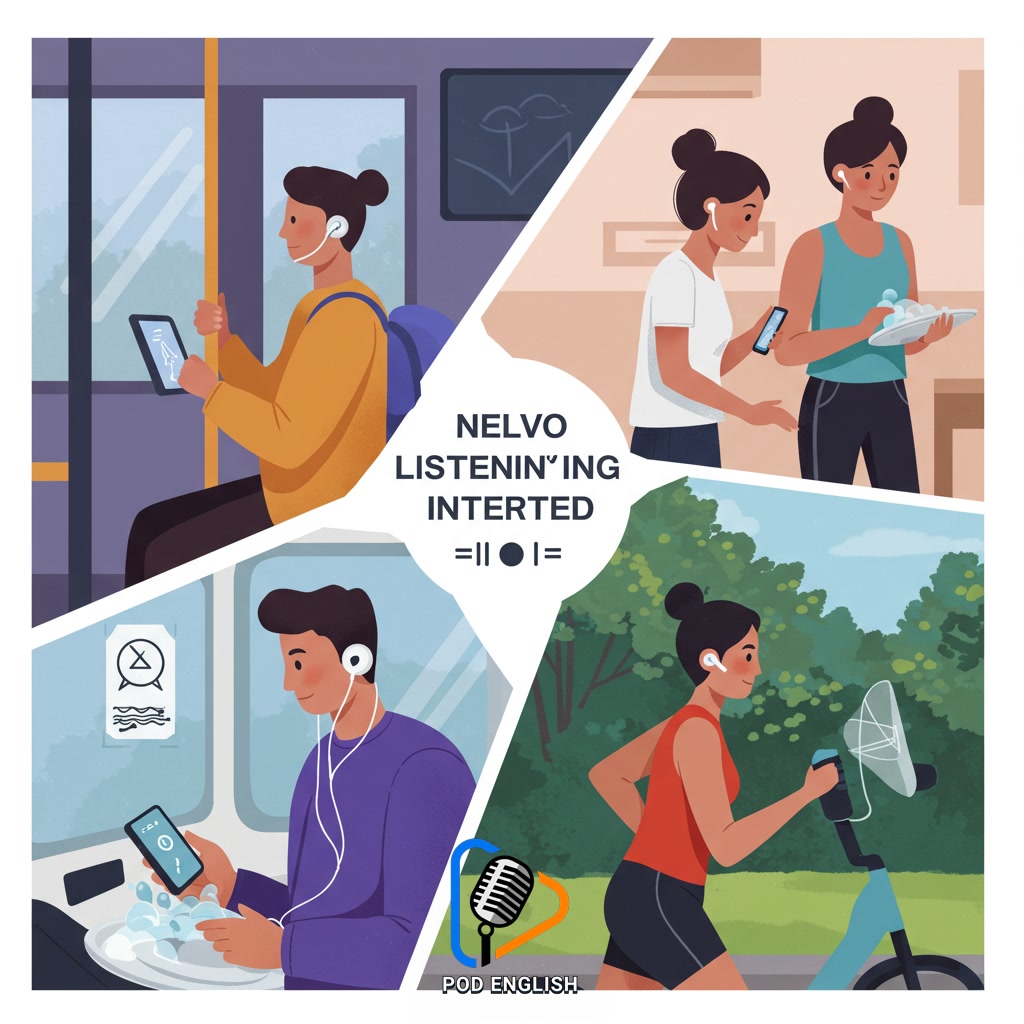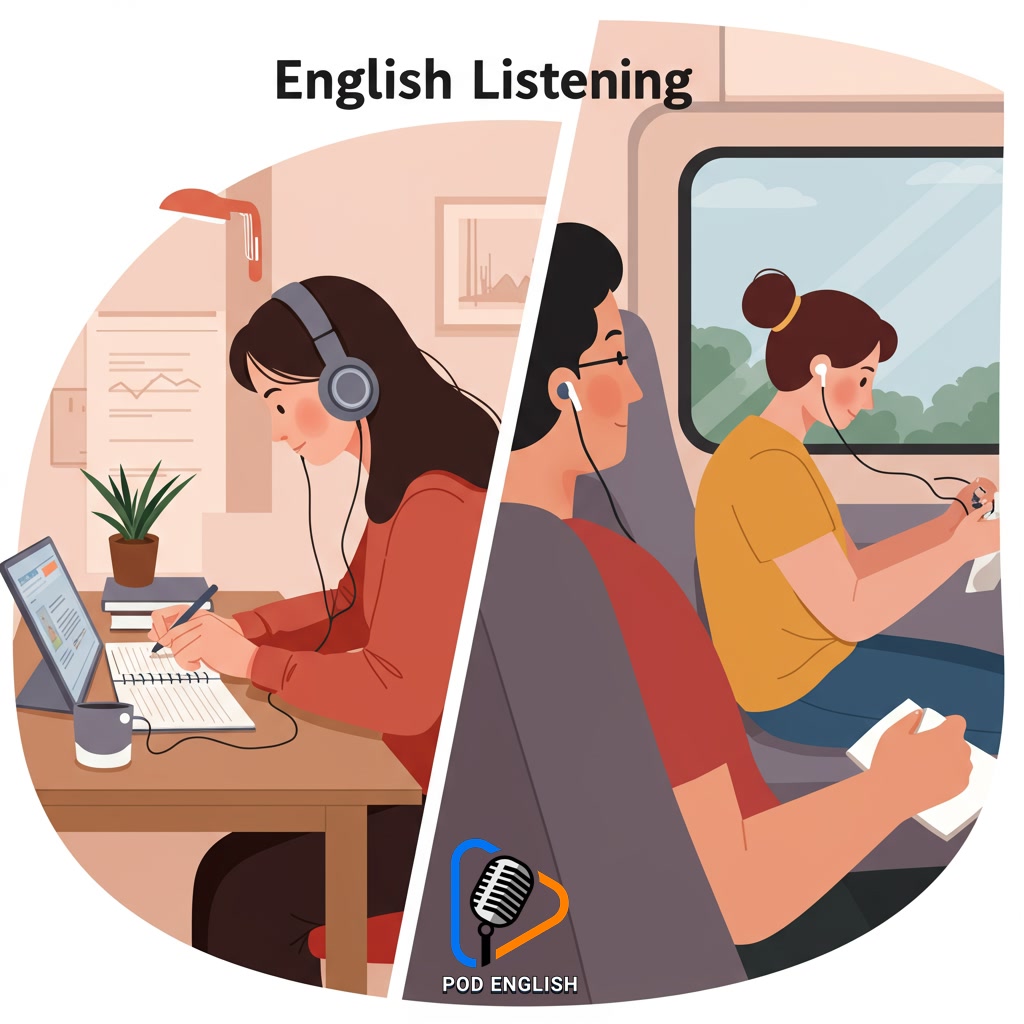Learn English
Master Daily English Listening: Integrate it Naturally into Your Study Routine

This content explores effective strategies to master English listening skills. It focuses on integrating listening practice naturally into your daily study routine. By making listening a consistent and effortless part of how you study English, you can achieve significant improvement over time. This approach helps build proficiency through regular, organic exposure.
Table of Contents
- Section 1: Why Daily English Listening is Crucial for Fluency
- Section 2: Finding the Right English Listening Resources for You
- Section 3: Strategies for Integrating Listening into Your Daily Routine
- Section 4: Effective Techniques for Active and Passive Listening
- Section 5: Combining Listening Practice with Other English Skills
- Section 6: Maintaining Consistency and Tracking Your Listening Progress
Section 1: Why Daily English Listening is Crucial for Fluency
Daily English listening is absolutely fundamental to achieving fluency. Unlike reading or grammar exercises, listening directly connects you with how native speakers actually use the language in real-time conversations, media, and everyday situations. Regular exposure helps you internalize natural pronunciation, rhythm, and intonation patterns that are difficult to learn from rules alone. Furthermore, listening builds your vocabulary and understanding of idiomatic expressions within authentic contexts, making them easier to remember and use correctly. It also improves your comprehension speed, allowing you to follow spoken English effortlessly. Without consistent listening practice, your ability to understand and respond effectively will be limited, making true fluency elusive. Therefore, integrating daily listening is not just beneficial, it’s a crucial step in your language learning journey.

Why Daily English Listening is Crucial for Fluency
Section 2: Finding the Right English Listening Resources for You
Finding the ideal English listening resources is crucial for effective daily practice. The “right” resources are those that match your current proficiency level, align with your personal interests, and suit your learning style. Don’t feel limited to traditional language learning materials; explore a wide range of options. This could include podcasts on topics you love, YouTube videos from creators you enjoy, music with lyrics, news broadcasts tailored for learners, or even excerpts from movies and TV series. The key is to find content that keeps you engaged and motivated to listen regularly. Experiment with different formats and subjects to discover what works best for you, ensuring it’s challenging enough to push you but not so difficult that it becomes frustrating.

Finding the Right English Listening Resources for You
Section 3: Strategies for Integrating Listening into Your Daily Routine
Once you’ve identified the right resources tailored to your level and interests, the key to mastering English listening lies in consistent integration into your daily life. Rather than scheduling dedicated, isolated listening sessions, look for opportunities to weave listening practice into activities you already do. This could mean listening to a podcast or audiobook during your commute, while doing chores like cleaning or cooking, during your exercise routine, or even during short breaks throughout the day. The goal is to make listening feel less like a chore and more like a natural background activity. By making it a seamless part of your routine, you increase exposure time significantly and build passive proficiency without feeling overwhelmed, turning everyday moments into valuable learning opportunities.

Strategies for Integrating Listening into Your Daily Routine
Section 4: Effective Techniques for Active and Passive Listening
Building upon the idea of integrating listening naturally, let’s explore the two main modes of listening: active and passive. Active listening involves focused attention, where you consciously try to grasp specific details, meaning, and potentially take notes or repeat phrases. This is crucial for deep understanding and practicing comprehension. Passive listening, conversely, is about immersing yourself in the language as background sound while performing other tasks. It helps you get accustomed to the rhythm, intonation, and overall soundscape of English without intense concentration. Both techniques are vital; active listening hones specific skills, while passive listening builds familiarity and confidence by making the language a constant presence. The key is to strategically incorporate both into your daily routine, leveraging different activities for each type of practice.

Effective Techniques for Active and Passive Listening
Section 5: Combining Listening Practice with Other English Skills
Building on understanding different listening modes, maximizing your listening practice involves integrating it with other English skills. This synergistic approach reinforces learning and makes the process more engaging. For instance, listen to a podcast or video while simultaneously reading its transcript; this links auditory input with visual text, enhancing comprehension and vocabulary acquisition. After listening to a story or discussion, try summarizing it orally or writing a short response, actively using the language you just heard. You can also use listening as a basis for improving speaking by mimicking the pronunciation and intonation of native speakers you hear. By consciously connecting listening with reading, writing, and speaking, you create a more dynamic and effective study routine where skills support and strengthen each other naturally.

Combining Listening Practice with Other English Skills
Section 6: Maintaining Consistency and Tracking Your Listening Progress
Building on integrating listening with other English skills, the next crucial step for mastering daily listening is maintaining unwavering consistency. Sporadic practice yields limited results; true progress comes from making listening a regular, almost automatic part of your routine. This consistent exposure gradually fine-tunes your ear to different accents, speeds, and contexts, making comprehension more effortless over time. Equally important is tracking your progress. Simply listening isn’t enough; observing your improvement, no matter how small, provides valuable motivation and helps you identify what’s working and what areas still need focus. Whether through a simple checklist, a study journal, or a dedicated app, monitoring your journey reinforces the habit and highlights the tangible benefits of your consistent effort, solidifying listening as a natural component of your English learning.
Maintaining Consistency and Tracking Your Listening Progress













